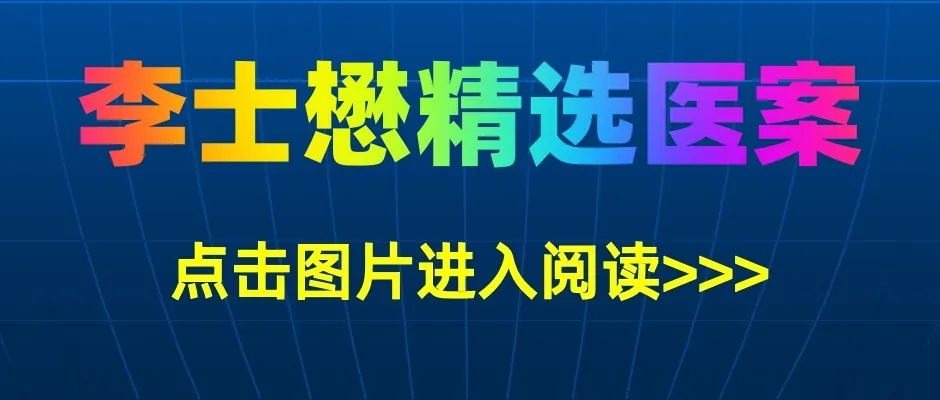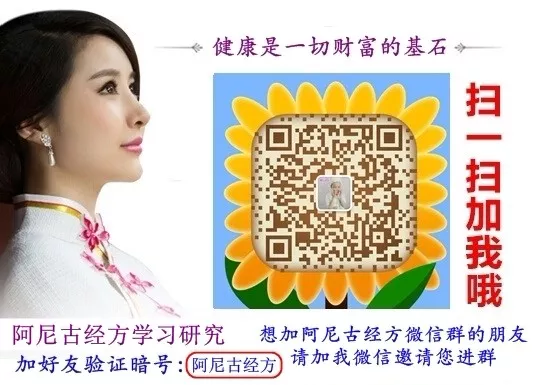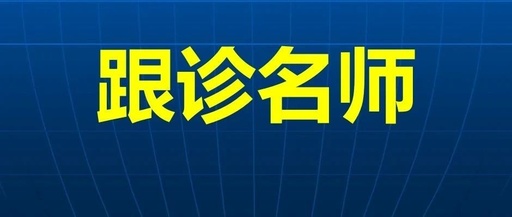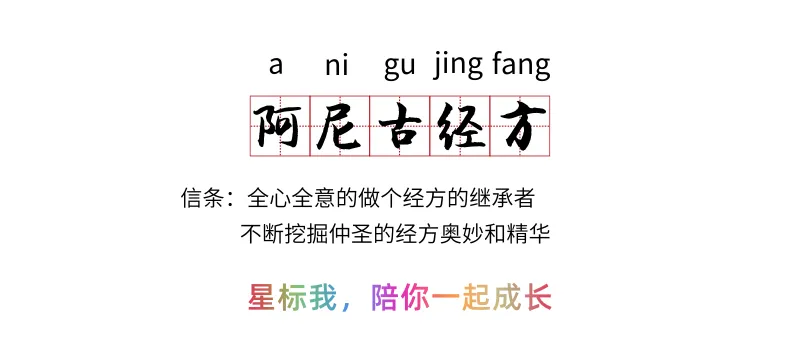
Understanding Pulse Diagnosis by Li Shimao (4) Deep Pulse (Middle)
Continuing from the previous issue:Understanding Pulse Diagnosis by Li Shimao (4) Deep Pulse (Upper)
Case 5: Fang, female, 24 years old, first diagnosed on May 20, 2013.14-15 days before menstruation, periumbilical pain and low back pain, especially severe in the first 1-5 days, gradually alleviating, improving two days before menstruation, menstrual period lasting 2-3 days, dark color with blood clots, with dull pain in the lower abdomen before menstruation, menstrual cycle of 30 days, last menstruation on May 5, usually cold hands and feet, prone to sweating, easily agitated, accompanied by white sticky phlegm, loss of appetite, usually not fond of drinking water, fatigue, tiredness, sticky stools, twice daily, with a history of hypertension.Pulse is wiry and rapid, tongue is normal.Diagnosis:Blood deficiency with cold stagnation.Treatment principle:Nourish blood and disperse cold.Formula:Danggui Si Ni Tang (Four Submerged Decoction) with Wu Zhu Yu and Sheng Jiang Decoction.Danggui 15g, Bai Shao 12g, Gui Zhi 15g, Dang Shen 12g, Xi Xin 7g, Gan Cao 7g, Da Zao 6 pieces, Huang Qi 12g, Mu Tong 7g, Sheng Jiang 5 slices, Fu Ling 15g, Bai Zhu 10g, Xian Ling Pi 12g, Wu Zhu Yu 12g, Sang Ji Sheng 20g, Du Zhong 20g, Shu Di Huang 12g.7 doses, decocted in water.Teacher Li Shimao’s comments:Pulse is deep, wiry, tight, and rapid, with a weak pulse at the chi position.Formula:Shao Fu Zhu Yu Tang (Lower Abdomen Blood Stasis Decoction).Fennel 7g, Gan Jiang 10g, Yan Hu Suo 12g, Wu Ling Zhi 10g, Myrrh 7g, Chuan Xiong 7g, Danggui 15g, Pu Huang 12g, Rou Gui 5g, Chi Shao 12g, Xiang Fu 10g, Wu Yao 10g, Ba Jiao Tian 12g, Rou Cong Rong 15g.Second diagnosis on June 28, 2013, two weeks after menstruation, currently experiencing periumbilical pain, reduced by 3/10 compared to before, frequency decreased, loss of appetite, reduced phlegm, last month had a large amount of black blood clots, no pain during menstruation, gradually increasing strength, pulse is wiry and tight with a weak chi pulse.Increased He Shou Wu 15g. 7 doses, decocted in water.Teacher Li Shimao’s comments:Pulse is wiry, fine, and strong.Diagnosis:Cold stagnation in the meridians.Formula:Ma Huang 6g, Xi Xin 6g, Pao Fu Zi 12g, Gui Zhi 12g, Bai Shao 12g, Zhi Gan Cao 9g, Sheng Jiang 10 slices, Zhi Chuan Wu 12g, with auxiliary sweating methods.Note:Danggui Si Ni Tang is derived from the “Shang Han Lun” (Treatise on Cold Damage) in the Jue Yin chapter, “When hands and feet are cold, and the pulse is thin and about to disappear, Danggui Si Ni Tang is the main treatment,” used for treating blood deficiency with cold stagnation. I diagnosed this pulse as wiry and fine with a reduction, where the wiry and fine indicates blood deficiency, and the reduction is a pulse between normal and weak, which Teacher Li Shimao believes also indicates insufficient Yang Qi. I believe blood deficiency leads to abdominal pain, as “blood is the mother of Qi”; prolonged blood deficiency results in insufficient Yang Qi to warm, leading to internal cold, thus using Danggui Si Ni Tang with Wu Zhu Yu and Sheng Jiang Decoction to nourish blood and disperse cold, and adding Huang Qi to tonify Qi, Sang Ji Sheng, Du Zhong, and Shu Di Huang to tonify the kidneys and strengthen the lumbar spine.This case was incorrect in pulse diagnosis, Teacher Li Shimao emphasized the importance of pulse differentiation, stating that during pulse diagnosis, the index, middle, and ring fingers should apply equal pressure to assess strength for determining deficiency or excess. Teacher Li Shimao diagnosed this pulse as deep, wiry, tight, and rapid, with a weak chi pulse, indicating cold stagnation and blood stasis, thus using Shao Fu Zhu Yu Tang to warm Yang, disperse cold, and invigorate blood. The weak chi pulse indicates kidney essence deficiency, thus adding Ba Jiao Tian and Rou Cong Rong to tonify the kidneys and replenish essence.During the second diagnosis, symptoms improved, and the menstrual period expelled a large amount of black blood clots indicating blood stasis was resolved, allowing the evil Qi to exit through menstruation, the pulse changed to wiry and tight with a weak chi pulse, indicating that cold stagnation had not dispersed, and kidney essence was insufficient, thus on the basis of the previous formula, addingHe Shou Wu to nourish essence and blood.Teacher Li Shimao believed the pulse was wiry, fine, and strong, diagnosing it as cold stagnation in the meridians, Shao Fu Zhu Yu Tang had sufficient power to invigorate blood but insufficient power to disperse cold, thus changing the formula to Gui Gan Jiang Zao Ma Xin Fu Tang to enhance the dispersing cold function. This formula is derived from the “Jin Gui Yao Lue” (Essential Prescriptions of the Golden Cabinet) for water and Qi diseases: “In the Qi level, if the heart area is hard and large like a plate, with edges like a spinning cup, caused by water and drink, Gui Zhi minus Bai Shao plus Ma Xin Fu Zi Tang is the main treatment.” Teacher Li Shimao expanded the application of this formula, not limited to treating water and drink, but applicable to any symptoms of cold stagnation, with a wiry or tight pulse, or spasms. While taking this formula, auxiliary sweating methods should be used, such as sipping porridge, warming cover, and frequent consumption, to achieve a slight sweating effect, allowing cold stagnation to resolve with sweat. This sweating method is derived from the administration method of Gui Zhi Tang, reflecting Teacher Li Shimao’s academic thought of inheriting and promoting Zhang Zhongjing’s differentiation and treatment.From this case, I once again recognize the importance of pulse diagnosis; if the pulse is wrong, all subsequent principles, methods, and formulas will be incorrect. Moreover, I also experience what Teacher Li Shimao often says, “To treat illness, one must be steadfast and adaptable“; as the pulse changes, the diagnosis changes, and the formula also changes. One cannot assume that if a certain formula works well for the patient, it should not be changed; do not be rigid with a single formula or method, but have a comprehensive view.Case 6: Yu, male, 54 years old, first diagnosed on January 4, 2013.Feeling cool at the Tian Tu (Heavenly Pivot) to the root of the tongue, worsened after inhaling cold air, after a long time felt discomfort in the stomach, self-reported sour and sweet in the mouth, not wanting to drink water, dry mouth in the morning, blood sugar normal, dry stools for the past three months, now stools are no longer dry, once daily, previously had chronic prostatitis.Western diagnosis:Reflux gastritis, duodenal bulbitis, superficial gastritis, gastric polyps, small liver cysts (3.4×2.6cm), right kidney hamartoma.Pulse is deep, wiry, and rapid, tongue is normal.Diagnosis:Heat stagnation.Formula:Xin Jia Sheng Jiang San (Newly Added Upward and Downward Powder).Jiang Can 12g, Chan Tui 7g, Jiang Huang 10g, Da Huang 5g, Zhi Zi 10g, Lian Qiao 8g, Dou Chi 12g.7 doses, decocted in water.Teacher Li Shimao’s comments:Change Lian Qiao to 15g, add Chai Hu 10g, Zhi Shi 10g, Bai Shao 10g, Zhi Gan Cao 8g.Note:Sheng Jiang San is derived from Yang Lishan’s “Shang Han Wen Yi Tiao Bian”, Teacher Li Shimao often uses this formula to treat heat stagnation, with effects like a drum. Patients with heat stagnation often do not show significant heat symptoms, and may even have coolness in a certain part of the body as the main symptom, as in this case. The patient mainly wanted to resolve the cool feeling at the Tian Tu area, having consulted various Chinese and Western doctors with no significant effect. Diagnosing the pulse as deep, wiry, and rapid, where deep indicates Qi stagnation, wiry indicates depression, and rapid indicates heat, the diagnosis is Qi stagnation with heat depression, thus using Sheng Jiang San with modifications. Teacher Li Shimao usually adds Zhi Zi Chi Tang and Lian Qiao to enhance its ability to clear and disperse heat. On the basis of the formula I prescribed, Teacher Li Shimao increasedLian Qiao‘s dosage and added Si Ni San, which I believe has the following two reasons:1. The patient’s rapid pulse is very evident, Lian Qiao can clear heat from the twelve meridians and resolve heat accumulation in the heart, thus increasing Lian Qiao‘s dosage to clear heat;2. Due to the deep and wiry pulse, adding Si Ni San can disperse the heat stagnation inside to the outside, enhancing the ability to disperse.I once asked Teacher Li Shimao for treatment when I had stomach pain, and he diagnosed the pulse as deep, wiry, and rapid, prescribing Si Ni San for treatment, and after three doses, the stomach pain was cured.Not understanding why Si Ni San was used instead of Sheng Jiang San, I asked Teacher Li Shimao, who explained: “Your pulse is somewhat wiry, so Si Ni San is used.” Since then, I have been attentive to when Teacher Li Shimao uses Sheng Jiang San, when he uses Si Ni San, and when both formulas are combined, discovering that the main difference lies in the pulse. If the wiry pulse is more evident, accompanied by symptoms of liver Qi stagnation, such as irritability, poor sleep, abdominal distension after eating, cold hands and feet, etc., Si Ni San can be selected; if the pulse is more slippery and rapid, with symptoms of coolness in a certain part of the body or burning sensations, dryness, and red urination, Sheng Jiang San can be selected; if both are present, both formulas can be used together.Case 7: Xu, male, 76 years old, first diagnosed on March 22, 2014.Right kidney cyst, right kidney has been removed, diagnosed with macrocytic anemia in 2010, examination results on March 10, 2014, are as follows:WBC 3.8×109/L, neutrophils 1.9×109/L, lymphocyte percentage 45%, HGB 94, RBC 2.24×1012/L, HCT 28.2%, MCV 126.3, MCH 41.9, RDW-SD 73.4, PDW 17.1, TBIL 40.42, DBIL 15.03, I-BIL 25.39, A/G 1.39, GLU 7.8, β2-microglobulin 4.48.Currently feeling fatigued, sometimes short of breath, cough with little phlegm, inflammatory changes in the lungs, complexion is dark, yellow urine, normal stools, poor appetite, dry mouth at night, thirsty but not quenched, daytime drowsiness, with a history of hypertension, controlled at 120/80mmHg.Tongue is tender and crimson with cracks, pulse is deep, slippery, rapid, and reduced.Diagnosis:Spleen deficiency with excess dampness.Treatment principle:Strengthen the spleen and transform dampness.Formula:Sheng Yang Yi Wei Tang (Tonifying Yang and Benefiting the Stomach Decoction) with modifications.Dang Shen 10g, Huang Qi 15g, Fu Ling 15g, Bai Zhu 10g, Qing Ban Xia 12g, Zhi Gan Cao 7g, Chen Pi 3g, Ze Xie 9g, Fang Feng 7g, Qiang Huo 7g, Du Huo 7g, Chai Hu 7g, Bai Shao 9g, Danggui 15g.Teacher Li Shimao’s comments: Remove the crimson tongue, change Dang Shen to 15g.Second diagnosis on April 5, 2014, after taking the above formula, the patient felt good, appetite increased, strength increased, shortness of breath reduced, cough worsened due to vinegar consumption, urine is no longer yellow, slightly dry mouth at night, currently taking folic acid and vitamin B12, stools are normal, wishes to continue conditioning, tongue is tender with cracks, pulse is deep, slippery, and rapid.Diagnosis:Phlegm-heat obstructing the lungs.Treatment principle:Clear heat, transform phlegm, and disseminate the lungs.Formula:Xiao Xian Xiong Tang (Minor Chest-Obstruction Decoction) with modifications.Huang Lian 7g, Qing Ban Xia 12g, Gua Lou 15g, Sang Bai Pi 10g, Di Gu Pi 12g, Huang Qin 7g, Jie Geng 5g, Qian Hu 7g, Dan Nan Xing 12g, Tao Ren 12g, Hong Hua 12g.Teacher Li Shimao’s comments: Jie Geng 9g, Qian Hu 10g.Third diagnosis on April 12, 2014, cough reduced to 6-7/10, slight shortness of breath, appetite normal, bowel and bladder normal, dry mouth reduced, no longer feeling fatigued, no other discomfort, tongue is tender with cracks, pulse is deep, slippery, and rapid.Increased Zhi Ke 7g, Zhu Ru 10g.Teacher Li Shimao’s comments: acceptable.Fourth diagnosis on April 19, 2014, no longer coughing, no shortness of breath, slight dry mouth at night, no other discomfort. Pulse is left deep and slippery, slightly reduced on the right cun.Formula:Xue Fu Zhu Yu Tang (Blood Mansion Dispersing Stasis Decoction)with added Huang Qi.Sheng Di Huang 12g, Tao Ren 12g, Hong Hua 12g, Danggui 15g, Zhi Gan Cao 7g, Chi Shao 10g, Jie Geng 6g, Zhi Ke 6g, Chai Hu 7g, Chuan Xiong 7g, Huai Niu Xi 9g, Sheng Huang Qi 15g.Teacher Li Shimao’s comments: continue with the above formula.On April 26, 2014, the patient called, stating that after taking the medicine, he underwent a blood routine check yesterday, and all indicators were normal, stopping the medication for observation. Follow-up until now, no discomfort, advised to avoid excessive fatigue, maintain a balanced diet, and have regular check-ups.Note:This patient has suffered from macrocytic anemia for 4 years, having consulted many places for treatment with no significant effect. Now coming to Teacher Li Shimao for treatment, on one hand, to treat macrocytic anemia, on the other hand, to condition the body and prevent recurrence of kidney cysts.Initially diagnosed with deep, slippery, rapid, and reduced pulse, the diagnosis was spleen deficiency with excess dampness, as the spleen is deficient, the essence of food cannot be normally transformed, leading to poor appetite, dark complexion, dry mouth at night, and thirst not quenched indicating signs of blood stasis, thus while strengthening the spleen and eliminating dampness, blood-invigorating herbs were added.During the second diagnosis, the patient reported significant improvement in all symptoms, with only cough and dry mouth remaining, at this time the formula changed to Xiao Xian Xiong Tang. Initially using Sheng Yang Yi Wei Tang to strengthen the spleen and eliminate dampness, the effect was significant, but the second diagnosis reverted to Xiao Xian Xiong Tang to clear heat and transform phlegm, changing to a purging method, which seems contradictory to the initial diagnosis. The key lies in the pulse! As the pulse changes, the diagnosis changes, and the formula changes; one cannot be rigidly attached to a previous effective formula, as it may not only fail to resolve the issue but also lead to other problems. Deep, slippery, and rapid pulse indicates phlegm-heat accumulation, thus the prescription of Xiao Xian Xiong Tang with Huang Qin and Dan Nan Xing to clear heat and transform phlegm, combined with Xie Bai San to clear lung heat, and Jie Geng and Qian Hu to disseminate the lungs and stop cough.During the third diagnosis, symptoms continued to reduce, the pulse did not change, still using the original formula with modifications, adding Zhi Ke to move Qi, Zhu Ru to transform phlegm.During the fourth diagnosis, symptoms were nearly resolved, with only slight dry mouth at night remaining, and the complexion still appeared dark, thus I intended to use Xue Fu Zhu Yu Tang to invigorate blood and resolve stasis, considering the right cun pulse was slightly reduced, indicating Qi deficiency, thus adding Huang Qi.However, Teacher Li Shimao believed that the pulse had not changed, and treatment should continue with the original formula. After taking the medicine, the biochemical indicators were completely normal.
Related Recommendations:
Recommended Books: TCM Book List Issue 1
Recommended Books: TCM Book List Issue 2
WeChat has been revamped!!!
Now, encountering our articles is all about fateEveryone remember to mark “Ani Gu Jing Fang” for learning with a “three-star”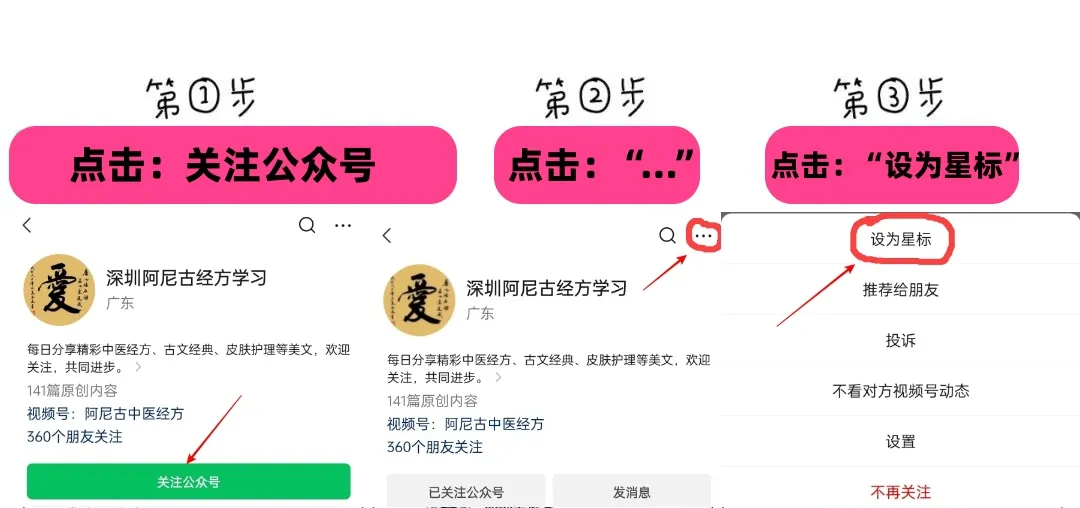
Copyright Statement
-
This articleis excerpted from “Understanding Pulse Diagnosis by Li Shimao”
-
Editor: Wang Sipin; Edited by Liu Jifang
-
Copyright belongs to the relevant rights holders, and reprinting aims to disseminate TCM knowledge. If you like Teacher Li’s works, please purchase genuine books. If there are any improper uses, please feel free to contact us.
I Submission email [email protected]【Li Shimao】 Exciting Medical Discussions【Click on the text in the table to read directly】
Reflections on TCM Education |
Positioning TCM – Practical Medicine |
| Reflections on Integrating TCM and Western Medicine | Review and Reform of TCM Education |
| Insights from Professor Qin Bowei’s Lectures |
Discussing the Five Movements and Six Qi
Combining Disease Differentiation and Syndrome Differentiation
Discussing Differentiation and Treatment (Syndrome)
Discussing Differentiation and Treatment (Treatment)
